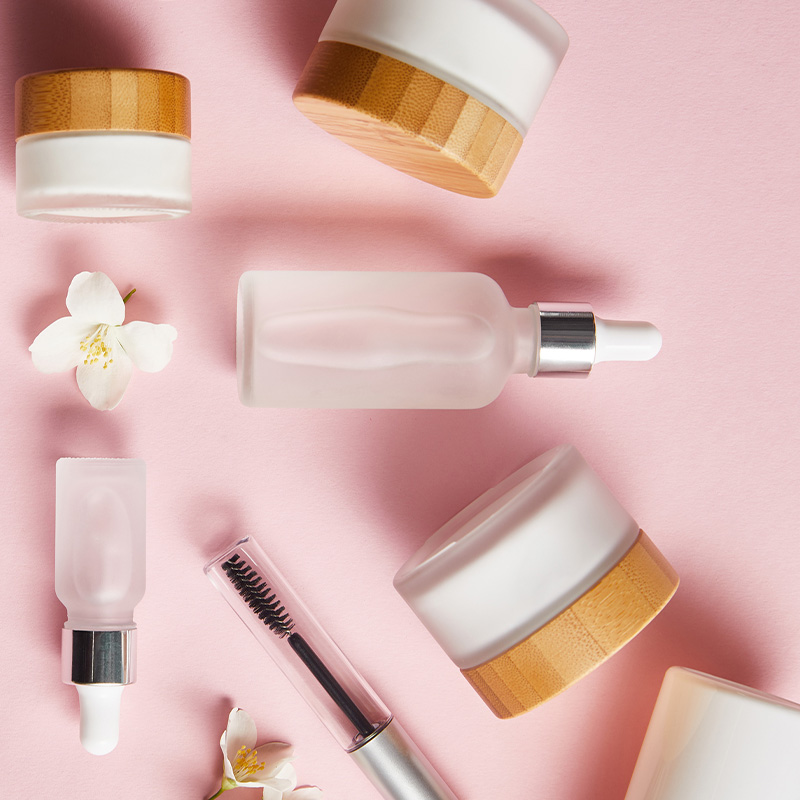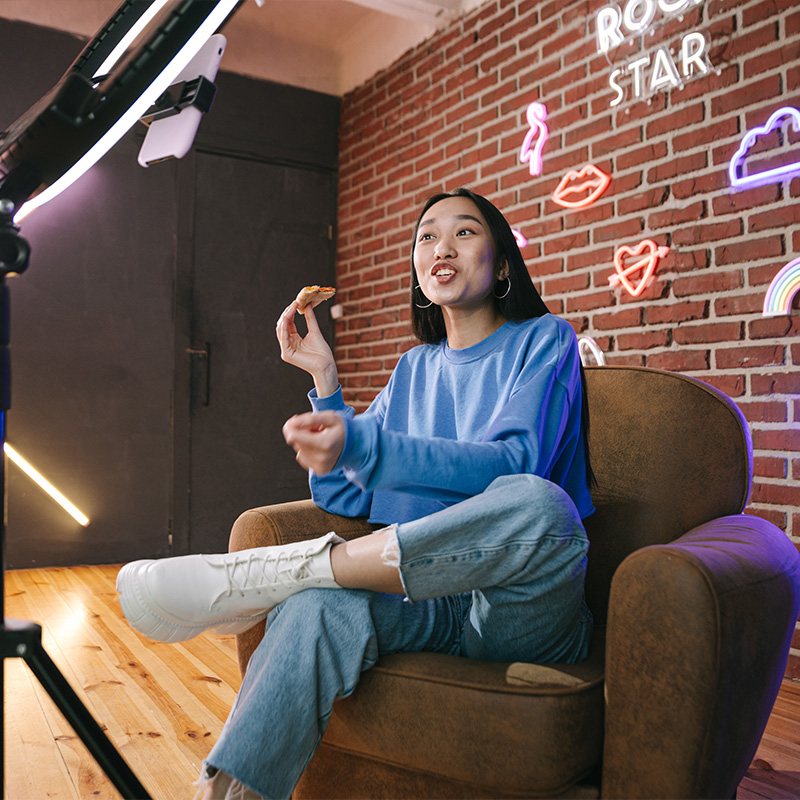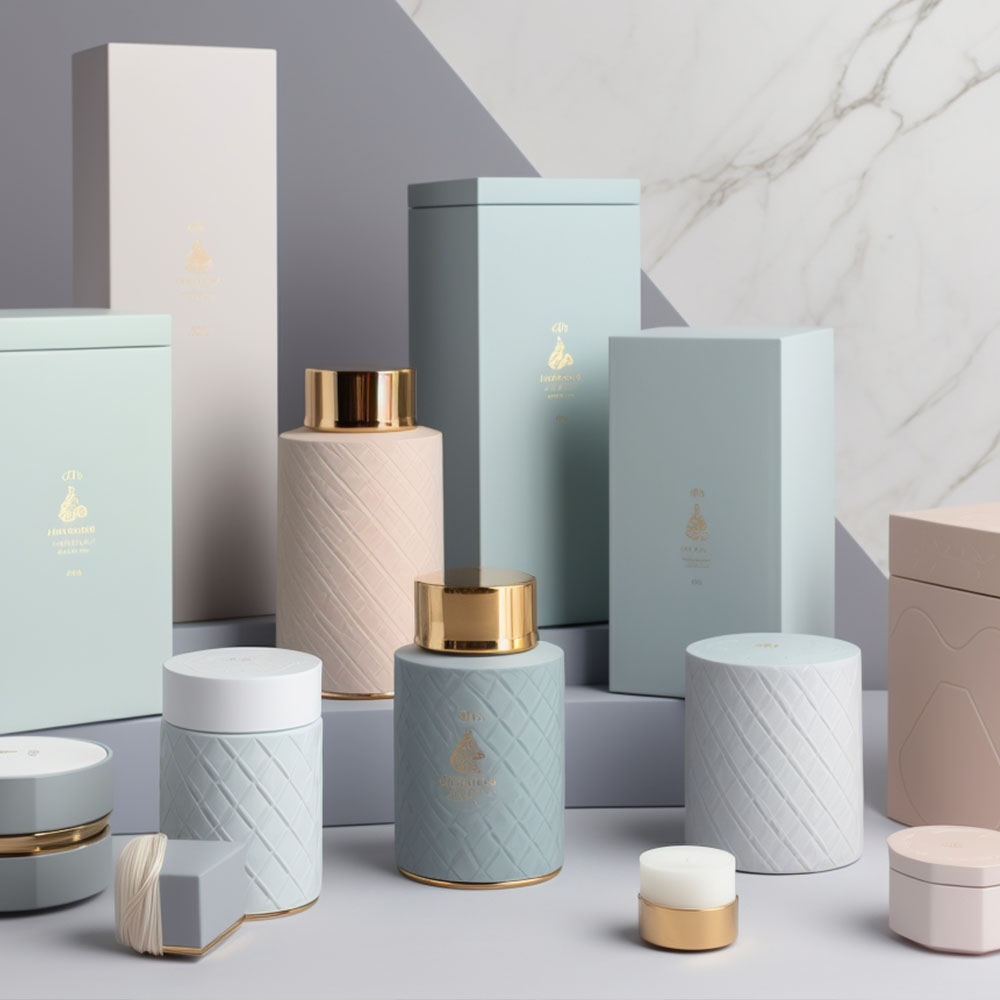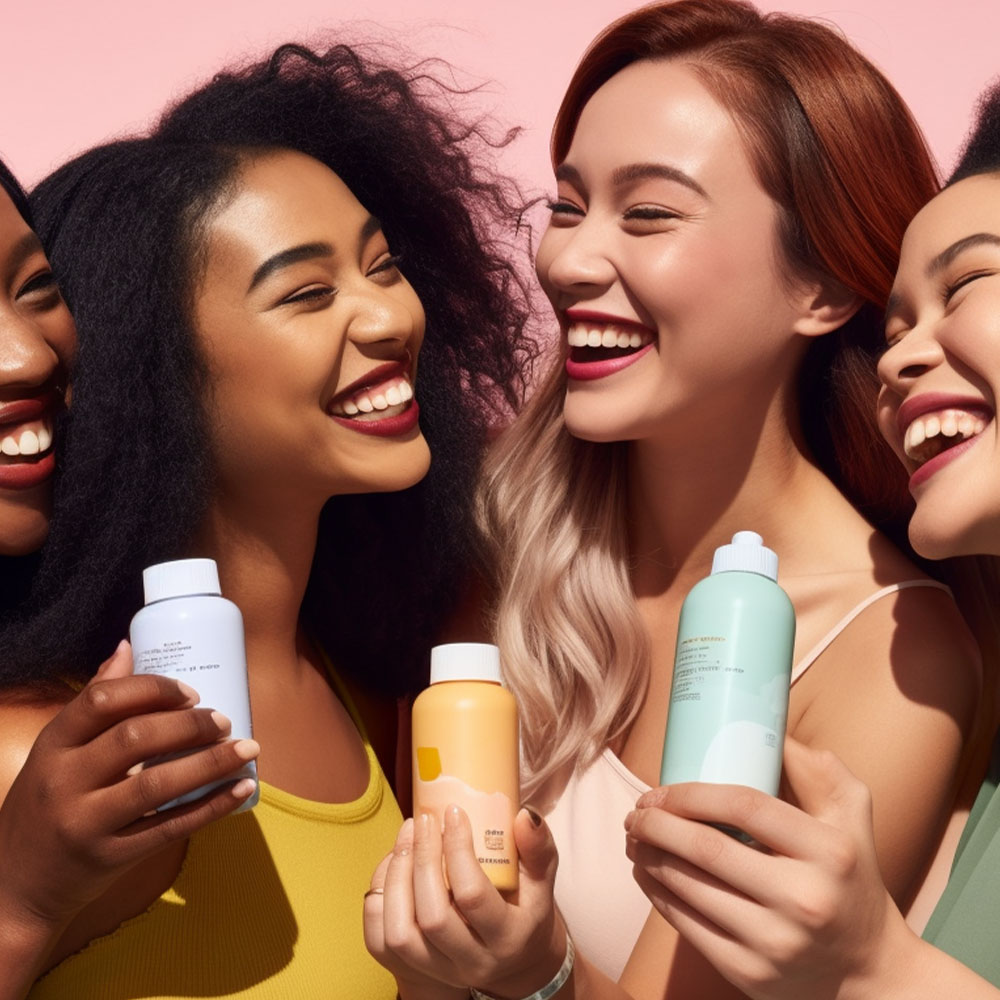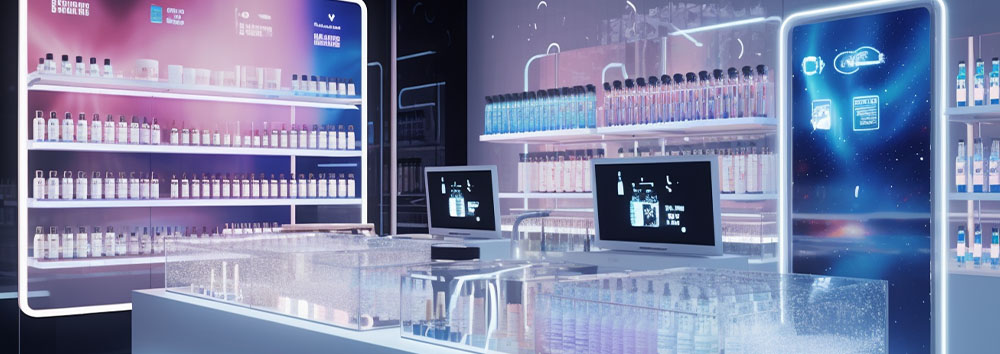
Marketing Trends for Beauty Brands in 2023
Are you a beauty brand looking to stay ahead of the curve? As we approach 2023, it’s essential to keep an eye on emerging marketing trends in the industry. With new technologies and changing consumer preferences, there are exciting opportunities for brands that can adapt and innovate.
In this article, we’ll explore the top marketing trends for beauty brands that we expect to see in 2023. From augmented reality experiences to sustainable packaging solutions, these trends offer exciting possibilities for brands looking to connect with their customers in new ways. So if you’re ready to take your brand to the next level, read on!
Marketing Trends: Personalized Product Recommendations
As we look ahead to the beauty industry in 2023, it’s clear that customization options will continue to be a driving force behind successful marketing strategies. With consumers increasingly seeking out personalized experiences, providing customized product recommendations is becoming essential for beauty brands looking to stay competitive.
Targeted advertising has become more sophisticated, allowing companies to analyze consumer data and provide tailored content based on their preferences. This technology allows beauty brands to offer products and services ideally suited to each customer’s needs.
But personalization isn’t just about using algorithms and analytics. It’s also about creating an emotional connection with your audience by understanding what motivates them and tailoring your messaging accordingly. Beauty brands that take the time to get to know their customers’ unique interests and concerns can build trust and loyalty over time.
In short, personalized product recommendations will be a crucial trend in the beauty industry moving forward. Whether through targeted advertising or emotional connections with customers, customizing experiences is no longer optional – it’s necessary for any brand looking to stand out in a crowded marketplace.
Marketing Trends: Social Media Influencer Partnerships
Are you tired of scrolling through Instagram and seeing every other post sponsored by a beauty brand? Then, get ready for even more as social media influencer partnerships remain a top trend in the beauty industry. But don’t worry; we’re not just talking about your typical celebrity endorsements. Instead, beauty brands are now turning to micro-influencers with smaller followings but higher engagement rates for a more authentic approach.
Why the shift towards micro-influencers? It’s all about long-term impact and ROI measurement. While it may seem like working with big-name celebrities would give a brand an instant boost, their followers may not necessarily convert into loyal customers. Conversely, micro-influencers often have niche audiences that share similar interests and values as the brand they’re partnering with. This allows for a deeper connection between the influencer’s followers and the brand, increasing loyalty and long-term sales.
So how do you ensure authenticity when working with influencers? It starts with finding ones that align with your brand’s values and messaging. And while metrics such as follower count are essential, it’s also crucial to look at factors like engagement rate and audience demographics. Additionally, implementing a micro-influencer strategy can lead to greater authenticity as these individuals often have closer connections with their following and are seen as more trustworthy sources.
Incorporating social media influencer partnerships into your marketing strategy can pay off correctly. For example, beauty brands can see a significant return on investment by focusing on long-term impact rather than short-term gains and prioritizing authenticity through strategic partnership choices. So why not try it – who knows, your following best-selling product might just come from an unexpected collaboration!
Marketing Trends: Integration Of Augmented Reality
Augmented reality has been changing the game for beauty brands in recent years. Interactive makeup and virtual try-on are just a few examples of how technology revolutionizes the industry. In 2023, we can expect to see even more integration of AR into marketing strategies.
One way that beauty brands can take advantage of this trend is by offering personalized virtual consultations. By using AR technology, customers can receive tailored advice without ever having to leave their homes. This saves time and provides an immersive experience that builds brand loyalty.
Another exciting development is the use of augmented reality in influencer collaborations. For example, brands can partner with influencers to create interactive makeup tutorials that allow viewers to follow along and virtually try on products. This type of content entertains and educates consumers about new products and techniques.
Finally, we can also anticipate seeing AR being used in physical stores. For example, virtual mirrors will become increasingly popular, allowing customers to test different looks without applying any product. This level of interactivity turns shopping into a fun and engaging experience while also boosting sales.
By embracing augmented reality, beauty brands have the opportunity to provide innovative experiences that stand out from competitors. Incorporating interactive makeup and virtual try-on offers more excellent online and offline customer engagement. The possibilities of integrating AR into marketing strategies are endless – let’s see what 2023 holds!
Marketing Trends: Increased Focus On Sustainability
Integrating augmented reality into the beauty industry has been a game changer, but what’s next? As we look toward 2023, another major trend that will take center stage is an increased focus on sustainability. This shift in mindset is driven by consumers who are becoming more environmentally conscious and demanding eco-friendly products from their favorite brands.
Companies must use ethically sourced ingredients and adopt eco-friendly packaging to meet this growing demand for sustainable beauty. Here are four ways beauty brands can make strides toward becoming more sustainable:
- Use recyclable or biodegradable materials for packaging
- Reduce overall packaging size to decrease waste
- Incorporate refillable options to reduce single-use plastic
- Partner with organizations dedicated to sustainability efforts
By implementing these changes, brands can appeal to environmentally-conscious customers while reducing their carbon footprint.
In addition to attracting new customers through sustainable practices, brands need to consider their impact on the environment as a whole. Ethical sourcing is crucial when creating sustainable products because it ensures no harm is done during ingredient acquisition. In addition, brands should work closely with suppliers to ensure fair labor practices and minimize environmental damage caused by extraction processes.
The future of beauty lies in sustainability and ethical sourcing practices. By adopting these trends early on, brands can create lasting change within the industry while appealing to a conscious consumer base. It’s time for us all to do our part in protecting the planet so that future generations can enjoy its natural wonders just as we have today.
Marketing Trends: Inclusivity And Diversity In Marketing Campaigns
I’m incredibly excited to see more inclusivity in advertising in 2023. Brands increasingly recognize the need to speak to all their customers, not just the majority. Diversity in brand messaging is another key trend to look out for – we need to see representation that reflects the diversity of society. Representation in media will be critical for brands to ensure they’re reflecting their values of inclusivity and diversity. We need to see more diversity in age, gender, and race and more in marketing campaigns. It’s time to celebrate our differences and ensure everyone feels included and seen. Marketing Trends for Beauty Brands in 2023 will be an excellent year for inclusivity and diversity in marketing campaigns!
Inclusivity In Advertising
As the beauty industry diversifies, brands are beginning to realize that inclusivity in advertising is more important than ever. Consumers want to see themselves represented in marketing campaigns and expect brands to embrace diversity across all platforms. In 2023, we expect more companies to embrace this trend by featuring models of different backgrounds, skin tones, sizes, and abilities.
To achieve true inclusivity in their advertising efforts, beauty brands must go beyond tokenism and incorporate diverse perspectives at every level of their organization. This means hiring people with different experiences and backgrounds for product development to marketing positions. Brands should also consider partnering with underrepresented communities on brand collaborations or celebrity endorsements to ensure they represent a wide range of voices.
One way that beauty brands can effectively implement inclusivity in advertising is through user-generated content (UGC). By encouraging customers from all walks of life to share their personal stories and experiences using their products, brands can showcase authentic representations of diverse consumers. This approach allows brands to connect with customers on a deeper level and helps them build trust within diverse communities.
Inclusivity in advertising may take time and effort, but it’s becoming increasingly clear that it’s worth it. Beauty brands must reflect these changes as the world becomes more diverse to remain relevant and competitive. With thoughtful strategies like UGC and collaborative partnerships with marginalized groups or celebrities, companies can create compelling marketing campaigns while prioritizing inclusivity as an integral part of their brand identity.
Diversity In Brand Messaging
As the beauty industry embraces inclusivity in marketing campaigns, it’s equally important for brands to focus on diversity in their messaging. This means going beyond featuring models of different backgrounds and sizes and ensuring that targeted demographics are represented at every level of brand messaging.
One way to achieve this is through celebrity endorsements that align with a brand’s values of inclusivity and diversity. By partnering with celebrities representing underrepresented communities or speaking out about issues such as body positivity, brands can effectively communicate their commitment to diversity in their messaging.
In addition to celebrity partnerships, brands must ensure that their messaging speaks directly to diverse audiences. This means crafting messages that resonate with people from various cultures, ethnicities, abilities, and genders. Brands should also incorporate inclusive language and imagery throughout their marketing materials, including social media posts, packaging designs, and website content.
Overall, companies can create an authentic connection with a broader range of customers by prioritizing inclusivity and diversity in marketing campaigns and brand messaging. In addition, through thoughtful strategies like targeting specific demographics and incorporating inclusive language and imagery into all branding efforts, beauty brands can continue to innovate while remaining relevant in an increasingly diverse world.
Representation In Media
Now that we’ve established the importance of diversity and inclusivity in beauty marketing campaigns, let’s delve deeper into one specific aspect: representation in media. The lack of cultural representation in beauty campaigns has been a long-standing issue, with many brands failing to cater to people from different backgrounds. This is where diversity in advertising comes into play. Beauty companies must ensure that their messaging reflects diverse cultures and ethnicities.
Representation goes beyond just featuring models from different backgrounds; it involves portraying them accurately and respectfully. Brands must avoid tokenism and ensure they’re not using diverse models as props but showcasing them authentically. By doing so, brands can create a sense of relatability among customers who identify with those representations.
Cultural representation in beauty campaigns also extends to product development. Beauty companies should strive to develop products that cater to all skin tones and hair types rather than only focusing on one demographic. This means expanding shade ranges, creating inclusive packaging designs, and incorporating language that caters to everyone.
By prioritizing representation in media, brands can ultimately build trust with underrepresented communities while expanding their customer base. Inclusivity and diversity are more than just buzzwords; they’re necessary for effective marketing strategies. As the world becomes increasingly diverse, adapting these values will be essential for remaining relevant in the ever-changing beauty industry.
Marketing Trends: Interactive And Engaging Content
As beauty brands strive towards innovation, interactive and engaging content remains a top priority. With the rise of social media platforms such as Instagram and TikTok, consumers crave visually appealing and entertaining content from their favorite brands. One way that beauty brands can meet this demand is through interactive product tutorials.
Interactive product tutorials allow a more hands-on approach to learning about new products. Rather than simply reading about how to use a specific item, users can watch step-by-step videos or even participate in virtual try-on. This makes the process more enjoyable for the consumer and helps them feel more confident in their purchase decisions.
Another trend gaining popularity among beauty brands is user-generated content campaigns. These campaigns encourage consumers to share their experiences with a particular brand or product on social media using specific hashtags or tagging the brand’s account. Not only does this generate buzz around the brand, but it also provides valuable insights into what consumers like and dislike about specific products.
Incorporating interactive and engaging content strategies into marketing plans is essential for staying relevant in today’s ever-changing digital landscape. By providing unique experiences for customers through interactive product tutorials and user-generated content campaigns, beauty brands can build stronger connections with their audience while simultaneously driving sales.
Remember: To keep up with the constantly evolving marketing world, stay ahead of trends, and experiment with new approaches – so don’t be afraid to get creative!
Marketing Trends: Emphasis On Clean And Natural Ingredients
Sustainable sourcing has been gaining traction with beauty brands for the past few years, and I predict it will be even more critical in 2023. Organic formulations are becoming increasingly popular, too, and I expect this trend to continue. In addition, cruelty-free practices are becoming a must for many beauty brands, and I see this as the norm in 2023. Consumers continue to emphasize clean and natural ingredients, so beauty brands must be up-to-date regarding sourcing and formulations. To stay competitive, brands need to be transparent about their ingredients, and I believe this will be more essential than ever in 2023. To ensure success, beauty brands must take these trends seriously – it’s time to focus on sustainability, organic ingredients, and cruelty-free practices.
Sustainable Sourcing
Are you tired of harsh chemicals in your beauty products? You’re not alone. As consumers become more conscious about what they put on their skin, brands are shifting towards clean and natural ingredients. But the emphasis on sustainability doesn’t stop there. Sustainable sourcing is becoming a top priority for beauty brands, with 2023 set to see some exciting developments.
Many brands will explore eco-friendly packaging options to reduce their environmental impact. Expect to see innovative materials such as mushroom-based packaging, seaweed sachets, and even biodegradable plastic alternatives. Brands will also focus on reducing waste by introducing refillable products or offering recycling programs for used packaging.
In addition to environmentally friendly packaging, fair trade sourcing will also take center stage in the coming years. Consumers want to know that the ingredients in their favorite products were ethically sourced and that workers involved in production received fair wages and treatment. Beauty companies prioritizing ethical sourcing can build customer trust while supporting communities worldwide.
Sustainable sourcing is not just good for the planet; it’s also good business practice. Brands that embrace sustainability can differentiate themselves from competitors and appeal to a growing number of socially responsible consumers. In 2023 expect an increased emphasis on sustainable practices throughout all aspects of the beauty industry, from ingredient sourcing to product packaging. The future looks bright for those who prioritize eco-friendliness and ethical standards!
Organic Formulations
As consumers become more mindful of what they put on their skin, beauty brands are shifting towards using clean and natural ingredients. In 2023, we can expect to see even more emphasis placed on sustainability as a top priority for the industry, including sustainable sourcing practices and eco-friendly packaging options.
One aspect of this trend is the benefits of organic formulations. Organic products have gained popularity recently due to growing concerns over synthetic chemicals used in traditional cosmetics. Using organic ingredients provides a safer alternative and adds health benefits such as increased hydration, nourishment, and improved texture.
However, one challenge in implementing organic formulations is sourcing organic ingredients. These ingredients can be harder to find than conventional ones since they must meet the standards of certifying organizations. Furthermore, because demand often outstrips supply, prices may be higher for organic materials. But despite these challenges, many companies recognize the value of investing in organic sourcing to appeal to customers who prioritize safe and ethical products.
By incorporating organic formulations into their product lines, beauty brands are committed to providing high-quality natural alternatives that benefit both people and the planet. With an increasing number of consumers seeking clean and healthy choices, it’s clear that sustainable practices like using organics are essential for businesses looking to stay competitive.
Cruelty-Free Practices
As the clean and natural beauty trend continues to gain momentum, consumers are becoming increasingly aware of ethical consumerism. One area where this is particularly evident is in cruelty-free practices. As a result, many people are now looking for products not tested on animals, making this a key consideration for brands looking to appeal to conscientious customers.
Marketing benefits can be significant for companies that embrace cruelty-free practices. By demonstrating their commitment to animal welfare, businesses can differentiate themselves from competitors and attract a growing segment of ethically minded consumers. This can help increase brand loyalty and generate positive word-of-mouth recommendations, helping to drive sales over time.
However, achieving full compliance with cruelty-free standards can be challenging for some companies. There are strict regulations governing testing procedures and ingredient sourcing, which must be adhered to if a product is going to meet certification requirements. Additionally, practical obstacles may be involved in finding alternative ingredients or suppliers that do not engage in animal testing.
Despite these challenges, many brands recognize the importance of offering cruelty-free options as part of their product range. Moreover, as more consumers become conscious of the impact of their purchasing decisions on animals and the environment, demand for these products will likely continue to grow.
While implementing cruelty-free practices may pose some logistical difficulties initially, the potential marketing benefits make it an investment worth considering for any business operating within the beauty industry today. With ethical consumerism set to remain at the forefront of consumer decision-making, incorporating such initiatives into your brand strategy could prove vital in securing long-term success in this dynamic market space.
Marketing Trends: Voice Search Optimization
Beauty brands are shifting towards voice search optimization with the increasing demand for convenience. According to a recent study conducted by Google, 27% of the global population uses voice search on mobile devices. This trend allows beauty companies to enhance customer experience and increase brand awareness.
One of the benefits of voice search is that it allows customers to quickly find what they’re looking for without manually typing in long queries. For example, if someone wants to buy a specific shade of lipstick from your brand’s collection, they need to ask their smart speaker or phone assistant. In addition, optimizing your website and content with relevant keywords and structure data ensures that your products appear at the top results when prompted through voice commands.
However, some challenges come with implementing voice search optimization strategies. The first challenge is ensuring that your brand’s name and product descriptions are easy for digital assistants to pronounce correctly. Optimizing for natural language searches requires a different approach than traditional SEO tactics. You’ll need to focus on conversational queries rather than just keywords alone.
Another important consideration is how users interact with your brand through voice-activated devices versus traditional browsing methods. People speak more informally and conversationally when they use their voices instead of typing text into a search engine. Therefore, to create compelling content optimized for this channel, marketers should aim for a friendly tone and clear messaging while maintaining brand identity.
In conclusion, incorporating voice search optimization into your marketing strategy can be highly beneficial in meeting today’s consumer demands for ease of use and convenience. However, it requires careful consideration of best practices and attention to detail to optimize your online presence for these types of searches. Nevertheless, with the right approach, beauty brands can leverage this emerging technology trend to reach new audiences and grow their business.
Marketing Trends: AI And Machine Learning In Marketing Strategies
The beauty industry has always been at the forefront of innovation regarding marketing strategies, and AI and machine learning are no exception. As technology evolves, more brands are turning towards these cutting-edge tools for their marketing campaigns.
One of the most significant advantages that AI and machine learning offer is marketing automation. Beauty brands can automate email marketing, social media posting, and even customer service responses with this technology. This saves time and ensures that every interaction with customers is consistent across all channels.
Another significant benefit of incorporating AI into marketing strategies is predictive analytics. By analyzing data from various sources, such as purchase history, search queries, and website behavior, brands can predict consumer trends and adjust their marketing efforts accordingly. This allows them to stay ahead of the curve by providing customers with what they want before they know they want it.
In addition to improving efficiency and predicting trends, AI and machine learning can also enhance personalization in marketing. With advanced algorithms that analyze user behavior patterns, brands can tailor their messaging to individual consumers based on their preferences and needs. This creates a more personalized experience for each customer, ultimately leading to higher engagement rates.
Incorporating AI and machine learning into marketing strategies is becoming increasingly crucial for beauty brands looking to stay competitive in an ever-evolving landscape. From automating tasks to predicting trends and enhancing personalization, these technologies offer numerous benefits that should not be overlooked. It’s clear that the future of beauty marketing lies in utilizing advanced technologies like these – will your brand be ready?
Innovative Packaging Solutions
Innovative Packaging Solutions are a crucial aspect of beauty brands’ marketing strategies. With the ever-evolving consumer preferences, cosmetic companies must keep up with innovative and eco-friendly packaging solutions to stay ahead of the competition.
Eco-friendly options have become more popular as consumers become increasingly conscious about their environmental footprint. Beauty brands can opt for biodegradable or recyclable materials such as glass, paperboard, or bamboo-based containers to reduce waste and promote sustainability.
Cost-effective solutions are equally important when it comes to packaging innovations. Brands should consider using lightweight yet durable materials that save costs and offer convenience during shipping and storage.
Packaging plays a vital role in creating an emotional connection with customers. Innovative designs like refillable bottles or customizable labels give consumers a personalized experience while reducing packaging waste at the same time.
By incorporating these innovative packaging solutions, beauty brands can appeal to environmentally-conscious consumers and showcase their commitment to sustainable practices. The future is all about innovation, so why not start now?
Conclusion
As we look to the future of beauty marketing, it’s clear that personalized recommendations and social media influencer partnerships will continue to play a significant role in capturing consumer attention. But let’s not forget about the importance of sustainability, diversity, and clean ingredients. These values are becoming more critical than ever before. You need to keep track of Marketing Trends.
And while AI and machine learning may seem futuristic, they’re already being used by some of the biggest names in beauty. So thinking about what innovations will emerge over the next few years is exciting. As content marketers, we aim to stay ahead of these trends and find creative ways to integrate them into our strategies. So don’t be afraid to experiment with innovative packaging solutions or voice search optimization – who knows where it might take you!
As we move towards 2023, one thing is sure: beauty brands must adapt or die. The industry constantly evolves, so companies must keep up with emerging trends to remain relevant. By embracing inclusivity, sustainability, and cutting-edge technology, beauty brands can create truly unique customer experiences. And as we’ve seen repeatedly, those who dare to innovate are often rewarded with loyal fans and increased sales. So let’s embrace these changes together and see where this journey takes us!
Let’s start a marketing plan for your beauty brand. Click here.


